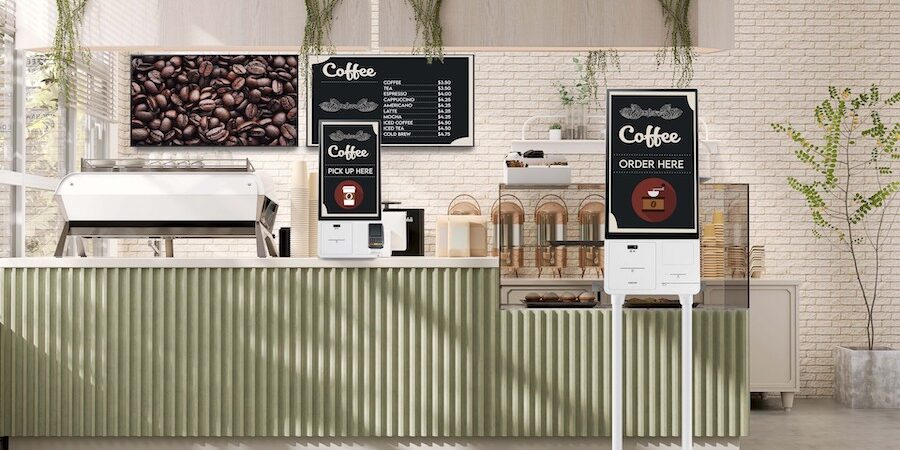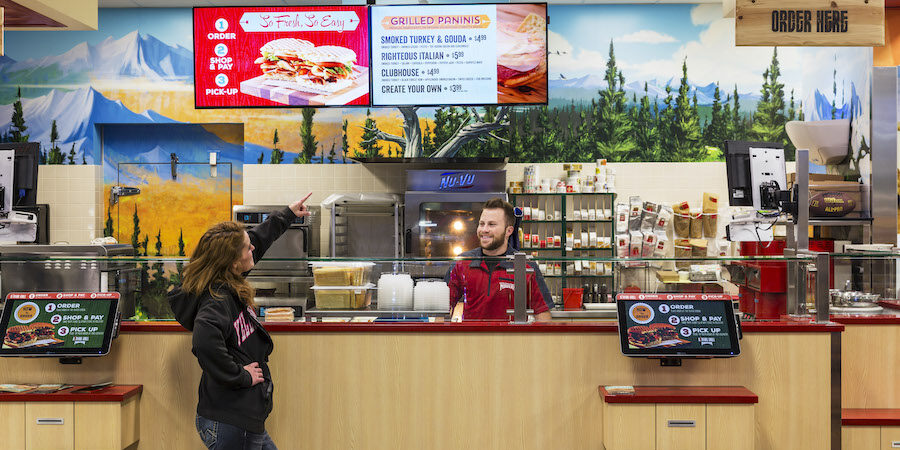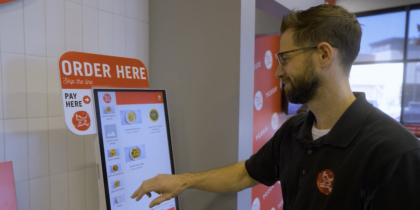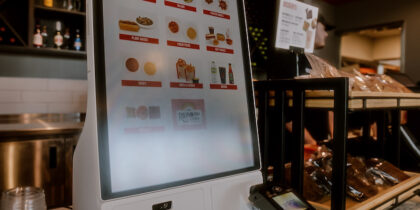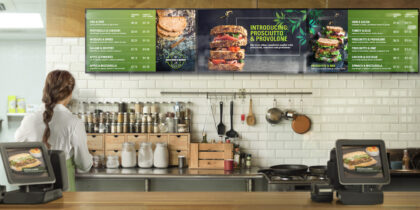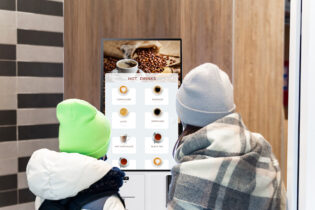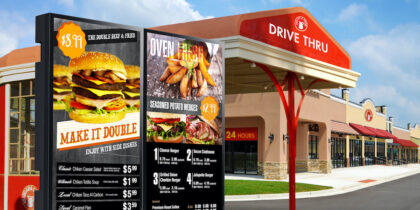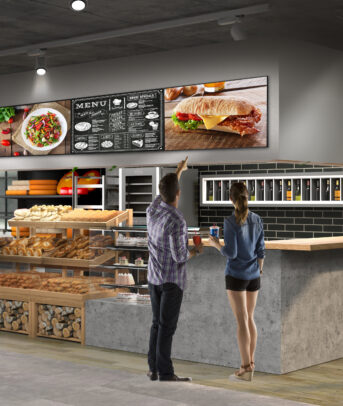Contactless technology has become ubiquitous in recent years, and for certain industries — like restaurants — it’s becoming table stakes. Consumers want fast, safe ways to order and pay, and they’re willing to trade traditional customer service models for convenience.
Self-service kiosks are a prime, off-the-shelf solution that offer multiple benefits. Restaurant kiosk ordering is easy to integrate into small spaces without disrupting the customer experience, and operators can make quick menu updates as items become unavailable. Self-service kiosks such as Samsung All-in-One Kiosk are reliable, they free up staff to focus on other tasks, and they can even boost profits with upsells and suggestions.
What’s more, consumer acceptance of this technology is high. As the trend toward contactless shopping has grown, self-service payment kiosks have quickly become a normal part of consumer life.
A solution to shortages
The restaurant industry remains about half a million employees short of pre-pandemic numbers. In many cases, staff shortages have forced operators to reduce operating hours and customers to wait in long lines. Such delays can hamper sales; nearly 75% of shoppers indicated that they sometimes leave a physical line before it’s their turn.
Self-serve kiosks can compensate for labor shortages by putting customers in control of their order, allowing them to browse menu items, select what they’d like, and pay in their own time, without the need for a sales assistant.
Benefits of kiosks in restaurants
Line busting
Restaurant kiosk ordering improves the customer experience by providing intuitive all-in-one ordering and payment systems, which enable shoppers to jump the line. There’s no more waiting for staff to become available, answer basic questions, or help with checkout. The kiosk puts customers in control of their own orders. They can browse, get meal information, order and pay, with multiple payment options.
Menu management
With more flexible technology, restaurant operators can instantly update their menu as it changes. If an item is suddenly out of stock, restaurants can adjust the menu immediately, improving customer satisfaction.
Customers using kiosks will have access to the most current, up-to-date menus. This removes the feeling of disappointment that comes when someone selects a product that’s no longer available.
Increase basket size in the c-store
Get your free guide to digitizing convenience stores to boost sales using digital signage. Download Now
Upselling and promoting premium products
Among the many benefits of kiosks in restaurants is that they make it easier to upsell. Unlike store employees, kiosks never forget to promote limited-time offers and new menu additions. They can even encourage people to join the store’s loyalty program, helping increase business revenue and profits.
Getting it right the first time
Kiosks help quick service restaurants (QSRs) and c-stores deliver a consistent customer experience by largely removing human error from the equation. As customers place orders, self-service helps ensure accuracy, confirming their final selections before payment. Many customers say modern menu boards that confirm their orders are a top reason for revisiting a particular venue or business.
Easy integration
Kiosks are compact self-serve solutions that can be easily integrated into QSRs and c-stores without disruption. They offer multiple modes of installation — standing, wall-mounted and countertop — and a compact, modern design, so they’re well-suited to the majority of store configurations and layouts. Kiosks can be managed remotely, allowing QSRs and c-stores to troubleshoot and resolve any issues from afar, anywhere they have an internet connection.
Samsung Kiosk helps restaurant brands meet demand for self-service
Samsung Kiosk is a sleek, all-in-one payment and ordering solution aimed at convenience retailers, QSRs and self-service restaurants. The versatile, compact solution offers multiple installation options: counter, stand or wall. Its eye-catching design draws attention on its own, while the neutral grey-white tones blend in naturally in any store environment.
Samsung Kiosk is available in two operating systems options. Both the Tizen and the Windows All-in-One Kiosk — powered by 11th Gen Intel® Core™ Processor — support enhanced compatibility with third-party devices, so you can seamlessly integrate the technology into business operations on day one.
With a highly responsive 24-inch touchscreen, the kiosk also includes a payment system and printer — all in a single plug-and-play unit. And thanks to the internal payment module, there’s no need for peripheral devices. Easy to install and activate, the kiosk offers transactional security, remote access and mobile device management (MDM) tools so IT and operations managers can easily monitor multiple kiosks across a network.
Customer safety is also top of mind. Shatterproof film prevents the screen’s glass from dispersing in an accident, and an antimicrobial coating helps inhibit bacterial growth for continuous use.
Kiosks lend a hand
Self-serve solutions like Samsung Kiosk provide a near-immediate solution for labor and supply chain challenges in the food and beverage industry. Always-on, self-serve kiosks enhance the customer experience by allowing people to skip the line and take charge of their orders. By improving overall efficiency and transaction value, kiosks also free up staff to focus on more value-added tasks. It’s a win-win.
Make your customer experience as compelling as possible with more restaurant and in-store display solutions, as you drive customer traffic, boost order size and streamline back-of-house processes. And get your free guide to digitizing convenience stores to boost sales using digital signage.
